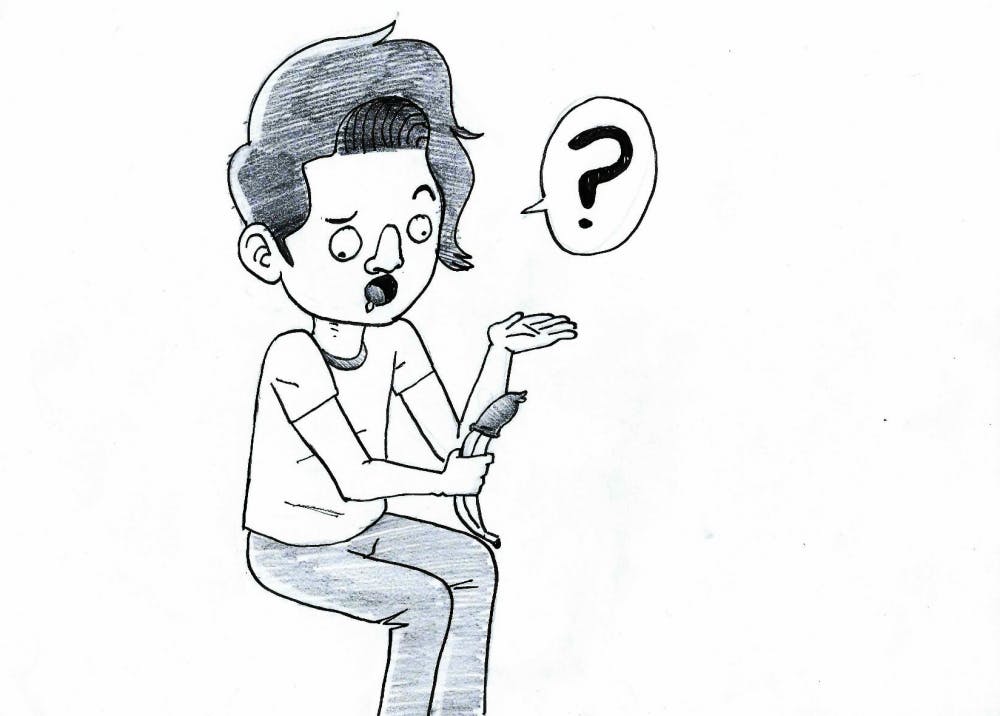ASU prides itself on being No. 1 in Innovation. Banners boasting this status are plastered across campus, essentially impossible to miss. The glossy maroon and gold posters milk every last drop of this prestigious ranking.
Yet, ASU is not always so innovative when it comes to combating sexual violence or educating students about healthy sexuality and relationships.
Innovation means tackling significant issues in a creative way, and ASU’s resources are average at best. Many guidelines listed on ASU's website are external resources and do not provide a lot of new information to students.
ASU hosts a variety of sex and relationship educational programs. For example, Devils in The Bedroom and ASU Wellness Ambassadors provide peer-to-peer education on healthy sexuality and relationships. The University also provides informational guidelines on its website.
While these tools and resources have the potential to provide a lot of positive information to students, there is a major issue: Students must actively seek these resources out.
It's likely that most students were exposed to sexual education in middle and high school, but it's also likely that the education wasn't sufficient enough to truly learn about sex and sexual health. This is why a university should make sexual education resources readily available to all students.
"The Sexual Violence Prevention and Education Program at ASU offers healthy sexuality education by request," Kimberly Frick, an ASU wellness program manager, said. "(It) addresses consent, communication, and the social and physical health aspects of sexual health."
This system of education simply assumes that every student is going to energetically seek resources to facilitate healthy relationships and sexualities. While this may be true for some, the average student will not go looking for more classes.
ASU’s system of sex and relationship education is set up in a way that students are unlikely to use or even know about these tools unless they are prompted to do so. Students who do not have an immediate concern with these issues are difficult to reach.
"Across the country I am seeing a horrible backwards step," Colleen Hendricks, a restitution advocate with experience in sex education and sexual violence prevention, said. "Everywhere I have worked I see the same lack of information. Nationwide there is fear talking about relationships or intimacy in the classroom. I've been working in this sector for thirty years and have not seen a measurable improvement in sexual and relationship education. It needs to be something that every student hears, not just the ones who want to."
Innovative sex and relationship education involves active support and responsibility from students, educators and administration. It does not mean exclusively pushing this responsibility on students.
Instituting a more comprehensive and accessible sex and relationship educational system at ASU would not be complex task. It could simply start with telling all students about the resources available in a systematic way. This could easily be done via ASU 101 classes.
It could also include instituting class projects and assignments that directly engage these resources. This way students would be required to interact with these tools early on in their college career.
An open discussion on sex and relationship education would draw from all sorts of different perspectives and backgrounds, potentially including everything from communication to engineering. Diverse perspectives would facilitate significant growth and development within these programs.
The University is sitting on its hands and passively slapping an “A for effort” stamp on the subject of sex and relationship education. This is not what innovation looks like.
ASU needs to construct a system of sex and relationship education which actively engages every sector of ASU. Innovation thrives in collaboration and dies in passivity. It is ultimately up to ASU to decide whether it wants to live up to the title of No. 1 in innovation, or simply turn a blind eye to an issue plaguing America’s college campuses.
Reach the columnist at sljorda4@asu.edu or follow @skyjordan4 on Twitter.
Editor’s note: The opinions presented in this column are the author’s and do not imply any endorsement from The State Press or its editors.
Want to join the conversation? Send an email to opiniondesk.statepress@gmail.com. Keep letters under 500 words and be sure to include your university affiliation. Anonymity will not be granted.
Like The State Press on Facebook and follow @statepress on Twitter.




